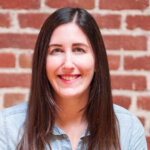
B2C Marketers: It’s Time to Invest in Better Marketing Attribution
Proper attribution will help your business continually improve and optimize your marketing efforts, ultimately growing the conversion rate of your site.
If you ask a B2C marketer what the most important aspect of their job is, odds are they would say driving new purchases and earning more revenue. Specifically, driving more conversions from high-value customers.
But while the end goal is clearly defined, too often marketers overlook how customers reach that final purchase.
In today’s crowded ecommerce world, buyers (both B2C and B2B) often take a circuitous path to purchase. In fact, up to 98 percent of visitors to your site will not buy on their first visit. It’s common for the customer journey to meander through multiple channels and touchpoints over months or even years.
That’s why it’s time digital marketers everywhere get serious about attribution models:
| Attribution (n): In marketing, attribution is the identification of a set of user actions (“events” or “touchpoints”) that contribute in some manner to the desired outcome, followed by the assignment of a value to each of these events. |
While the final conversion point is crucial, it’s just one small part of the larger customer journey. To get the full picture of the effectiveness of your marketing campaigns and determine where to focus your efforts, you need to know:
- How many touchpoints does my average customer have before they make a purchase?
- Which channels drive the highest conversion rates and purchase orders?
- Which campaigns encourage more loyal customers to purchase again?
Understanding and measuring your buyer’s path to conversion is essential to keeping your marketing engine running efficiently and effectively. With the right multi-channel marketing attribution, you can continually improve and optimize your marketing to boost your ROI.
Marketing Attribution 101: Channel, Funnels, and Touchpoints
The first step in wrapping your head around accurate marketing attribution is to truly understand all of your acquisition channels. Knowing how a consumer reaches your business can reveal valuable insights about where you should focus your marketing efforts and spending. Below is a list of some of the most common acquisition channels:
- Organic channels (owned and earned)
- SEO
- Content marketing: blog, email, podcast, social media (tweets, posts)
- Public relations/publicity
- Mobile app
- Paid channels
- Social media ads
- Search engine ads
- Pay-per-click ads
- Paid influencers
- Retargeting
- Paid content promotion
All of the above are ways that customers find you. From there, there are many touchpoints along their funnel to conversion:

These touchpoints are typically a combination of your paid and organic channels working together to move a customer along the funnel. What does this look like for a typical ecommerce customer? Here’s an example:
Adrian sees a compelling Instagram ad on her mobile phone and clicks through. She browses the ecommerce website and clicks on a product detail page for an item she’s interested in, but doesn’t purchase. A few days later, Adrian is reading a news article at work and sees a retargeting ad for the exact item she looked at on the website. This puts the brand back in her mind and Adrian clicks through to purchase the product on her laptop.

This is a somewhat simple example of a buyer’s journey, and yet it can still be incredibly difficult to track. Because your buyers are likely moving between multiple channels and devices, you have to stitch together all the different interactions one person has with your brand.
The only way to achieve this is with identity resolution. This technology allows you to access all of this historical browsing data as soon as a buyer shares their email address. You can then piece together the steps between the initial click from an ad campaign and the eventual purchase, unifying all your customer data within one buyer ID. By pulling all of this data together, only then can you get a full view of your customer behavior.
Better Measurements of Marketing Attribution
You might think to yourself, “As long as a customer ends up converting, why does it matter what path they take to get there?”
Well, it matters because every touchpoint along the customer journey to conversion is an opportunity to optimize. Unless your conversion rate is 100 percent (in which case you should be writing this blog post), it’s important to identify the weak spots in your funnel and determine where you’re losing potential customers. Perhaps some of your messaging is confusing or that one email campaign just isn’t resonating the way you thought it would.
Whatever the case may be, you can’t fix it until you can accurately identify it. That’s why it’s important to move beyond the basic vanity metrics like clicks, opens, and visits. You need to tie your campaigns directly to revenue by measuring metrics like revenue per email send instead.

You should also measure vital metrics like:
- Average order value
- Customer lifetime value
- Time to first purchase
Moving beyond campaigns, you also need to understand how specific products contribute to conversion by identifying critical shopping patterns like:
- Products that drive first and repeat purchases
- Products that more often drive customer loyalty
- Complementary products to suggest for upsell opportunities

At the same time, you also need to understand first touch, last touch, and multi-touch attribution models. Then you can see if a campaign was the first point of entry, the last touch, or somewhere in the middle—attributing more or less revenue to each touchpoint along the way.
All of these metrics show you deeper insights into your customer behavior beyond just clicks and views. Instead, you can understand which channels really work best, which messages resonate, and which products drive the most revenue.
Always Be Testing
Once you’re able to truly measure multi-touch attribution, you can optimize all of your campaigns for success. Marketers must always be testing. Using these revenue-based metrics, measure the success of all your ads, all your content, and every page on your site. Know where your weak spots are and run A/B tests to see if you can improve with some slight tweaks to copy or creative.
In addition, analyze which marketing channels lead to the highest conversion rates and promote customer retention so that you can direct your marketing dollars where they’ll be most effective. You can also re-merchandise your best-performing products to cross-sell and upsell more effectively.
Guided by the right attribution data, there truly is no end to the testing you can do to incrementally improve your marketing. Without attribution modeling, you’re just working in the dark. With it, you’re on the path to dramatically increasing your ROI.
Enjoying this article?
Subscribe to our newsletter, Good Question, to get insights like this sent straight to your inbox every week.

About the Author
Cara Hogan
Cara Hogan is the Content Strategist at Zaius, the B2C CRM that connects customer data and orchestrates your campaigns. She is also the host of Zaius' podcast, The Empowered Marketer, and the ecommerce video series, Marketing Unboxed. Before transitioning to marketing, she worked as a journalist at a number of publications, including the Boston Globe.